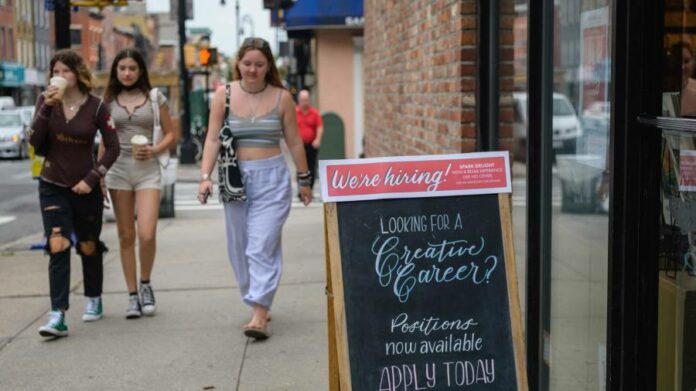Two closely watched US inflation reports rose by more than expected, highlighting persistent price pressures and resilience in the jobs market that strengthen the case for the Federal Reserve to raise interest rates next week.
The labour department’s employment cost index, which tracks wages and benefits paid by private and public sector employers, rose 1.2 per cent in the first three months of this year, up from 1 per cent in the last three months of 2022 and higher than consensus forecasts of 1.1 per cent.
Total pay for civilian workers rose 4.8 per cent year on year — down slightly from the previous quarter, but still well above its pre-pandemic average of 2.2 per cent.
The index is closely watched by policymakers as a reliable indicator of wage growth, which is one of the biggest contributors to inflation, particularly in the service sector. Pay rises in this sector slowed slightly compared with the previous quarter, from 1.2 per cent to 1.1 per cent.
Separately, the so-called Core PCE index — the Federal Reserve’s favoured inflation measure — was higher than forecast at 4.6 per cent year on year in March, while February’s number was revised upward to 4.7 per cent.
“The latest readings that we’re getting on inflation pressures just aren’t moving in the right direction from the Fed’s perspective,” said Nancy Vanden Houten, lead US economist at Oxford Economics. “By many measures the [labour] market is still tight, and that may just mean that it takes longer for wage pressures to come down.”
The Fed has been battling to bring inflation back towards its 2 per cent target after consumer prices hit a 40-year high last year. It has lifted its benchmark interest rate from close to zero at the beginning of last year to almost 5 per cent today, and is widely expected to announce a further 0.25 percentage point rise next week.
However, while most observers are treating next week’s rate rise as a fait accompli, there is less consensus on whether the central bank will need to go further.
Data released this week showed economic growth slowed dramatically in the first quarter and jobs growth has begun to slow. However, Friday’s figures are only the latest in a series of indications that some price pressures remain stubbornly high.
Vanden Houten said Friday’s data meant a rate rise next week was now “pretty much a done deal”, and would increase the likelihood that the Fed would make a further increase in June.






